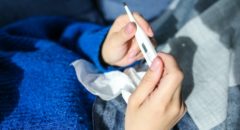Flu season is here and many people are wondering if they should even bother getting a flu shot, especially because it’s only 10% effective. Should we even bother, if our chances of catching the flu are high?
As the flu barrels across the United States, the good news is that this year’s vaccine may work better than many expected. Health officials say there are a number of signs pointing to a potentially rough flu season and the problem with the flu is that the virus constantly changes.
The flu has reached epidemic proportions in seven of the 10 regions in the country, according to Lynnette Brammer, an epidemiologist in the U.S. Centers for Disease Control and Prevention’s influenza division.
Even more troubling, the same, more severe H3N2 flu strain that was around last year is circulating again this year, she said.
That concerned flu experts who had watched the vaccine show only 10 percent effectiveness against the H3N2 strain that circulated in Australia, where the flu season has just ended.
But a recent report in the journal F1000 Research found the Australian strain of H3N2 is not identical to the predominant virus circulating in the United States.
“The majority of the viruses are well-covered by the vaccine,” said lead researcher Dr. Slobodan Paessler, a professor in the department of pathology at the University of Texas Medical Branch in Galveston.
“There are some minor groups of viruses that are not well-covered,” he added.
On average, flu vaccines have been about 42% effective, though that number can range from 10 to 60% in any given year.
“The current vaccine in the U.S., in contrast to the Australian [vaccine], will work because we have most of the American H3N2 viruses, rather than the Australian one,” Paessler explained.
Using a computer program to compare the viruses used in the vaccine to the circulating strains of flu in the United States, Paessler and his colleague, Veljko Veljkovic from Biomed Protection in Galveston, found they are a good match. That means the vaccine should be as effective as it was last year.
Last year, the vaccine was 43 percent effective against the H3N2 virus and 48 percent effective overall, according to the CDC.





